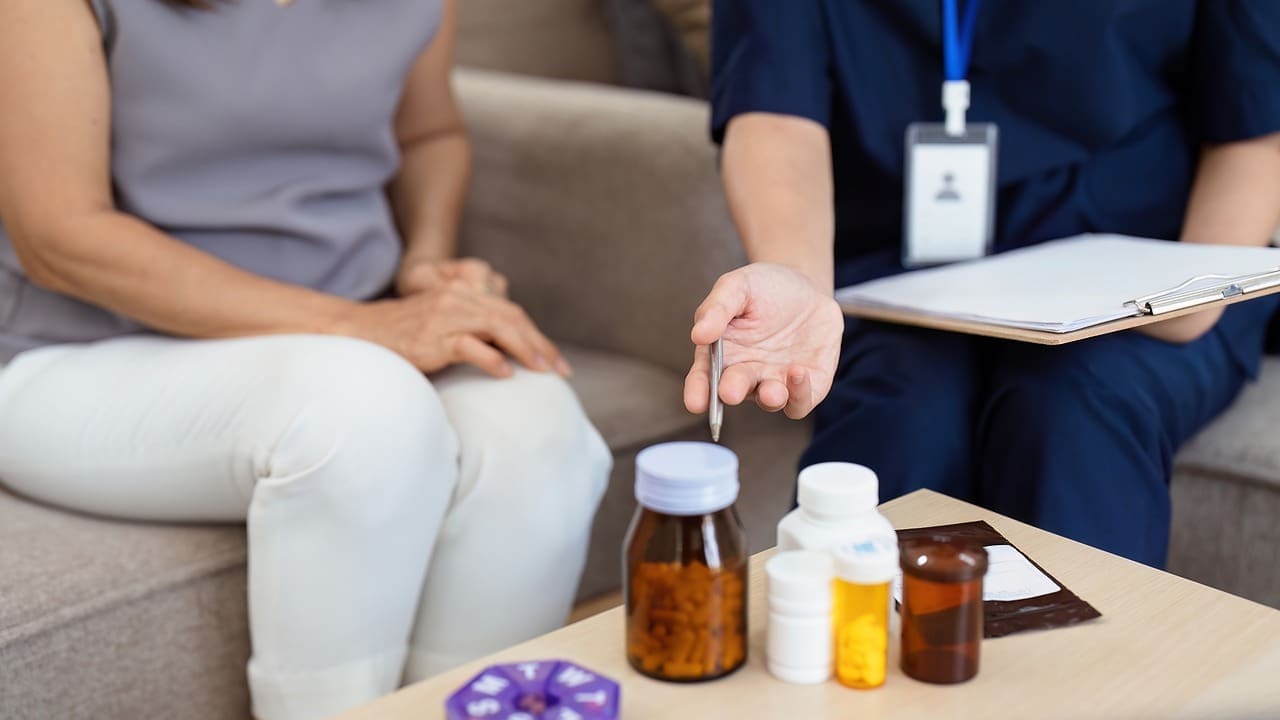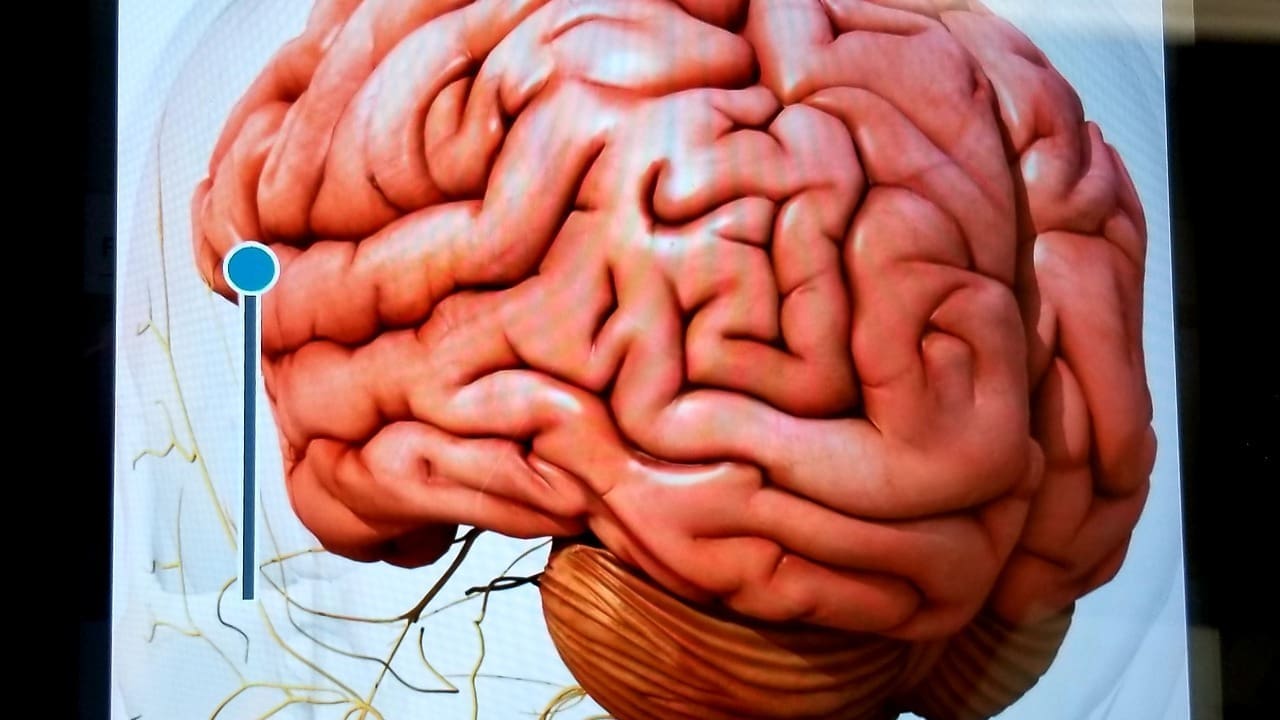Last Updated on November 27, 2025 by Bilal Hasdemir

Prostate cancer is a big worry for men all over the world. Most men with this disease will reach a stage where it spreads. At Liv Hospital, we are committed to providing world-class healthcare and support for patients from abroad.
Androgen deprivation therapy (ADT) is key in treating advanced prostate cancer. It works by reducing or stopping androgens, like testosterone, which help cancer grow. Hormone shots for prostate cancer play a big role in this treatment.
We know that dealing with prostate cancer and its treatment can feel too much. Our aim is to help you understand ADT therapy drugs and hormone treatments for prostate cancer. This way, patients can make better choices about their care.
Key Takeaways
- Androgen deprivation therapy (ADT) is a main treatment for advanced and metastatic prostate cancer.
- Hormone shots for prostate cancer are used to lower or block androgens.
- Liv Hospital provides world-class healthcare with complete support for international patients.
- Understanding ADT therapy drugs is key for patients to make informed decisions.
- Prostate cancer treatment can be complex, but we offer full care.
Understanding Prostate Cancer and Hormone Dependency
It’s key to know how hormones affect prostate cancer for the best treatment. Prostate cancer often relies on hormones, like androgens, to grow and spread.
The Role of Androgens in Prostate Cancer Growth
Androgens, like testosterone, are vital for prostate cancer cell growth. They make cancer cells grow, making them a main target for treatment. Hormone therapy for prostate cancer tries to lower androgen levels or block their action on cancer cells. This helps slow or stop tumor growth.
Why Hormone Control Is Essential in Treatment
Managing hormone levels is key in fighting prostate cancer. Lowering androgen levels or blocking their effects can greatly slow cancer cell growth. This method, called Androgen Deprivation Therapy (ADT), is a mainstay in treating advanced prostate cancer. ADT therapy means reducing hormone production or blocking androgen effects on cancer cells, leading to better patient results.
Our team focuses on personalized care, considering each patient’s unique needs. By understanding prostate cancer’s hormone dependency, we can create tailored treatment plans to manage the disease effectively.
What Is Hormone Treatment for Prostate Cancer?
Androgen deprivation therapy (ADT) is a key treatment for advanced prostate cancer. It aims to lower male hormones that help cancer cells grow. At our institution, we offer hormone therapy to slow cancer growth.
Hormone treatment, or ADT, targets prostate cancer. It lowers male hormones to slow cancer cell growth. For more on first-line treatments, visit our page on first-line treatment for.
The Science Behind Androgen Deprivation
Androgens, like testosterone, help prostate cells grow. In prostate cancer, these hormones can make cancer cells grow. ADT reduces these hormones to slow cancer growth.
LHRH agonists, like leuprolide, are used to lower testosterone. They first increase testosterone production but then decrease it over time.
Key aspects of LHRH agonists include:
- Effective in reducing testosterone to castration levels
- Used in various stages of prostate cancer treatment
- Available in different formulations, including injections and implants
ADT Therapy Meaning and Objectives
ADT therapy aims to keep testosterone levels low. This controls prostate cancer cell growth. Its main goals are to slow disease progression, ease symptoms, and improve life quality.
The main goals of ADT therapy include:
- Reducing testosterone levels to castration levels
- Controlling the growth of prostate cancer cells
- Alleviating symptoms associated with prostate cancer
- Improving overall survival and quality of life
Understanding ADT helps us see its role in prostate cancer treatment. Our institution offers effective care and treatments for prostate cancer patients.
Types of ADT Therapy Drugs for Prostate Cancer
ADT therapy drugs are key in fighting prostate cancer. They lower hormone levels that help cancer grow. These drugs stop androgens from acting on cancer cells, slowing the disease.
LHRH Agonist Examples: Leuprolide, Goserelin, and Triptorelin
LHRH agonists first boost hormone production, then lower testosterone levels. Leuprolide, goserelin, and triptorelin are examples. They come as injections, with some given every 6 months.
Leuprolide comes in monthly and extended-release forms. Goserelin is given every 12 weeks. Triptorelin is another option for ADT treatment.
LHRH Antagonists
LHRH antagonists block gonadotropin-releasing hormone, quickly lowering testosterone. They are an alternative to LHRH agonists and used in various prostate cancer stages.
Anti-Androgens and Other Hormone Blockers
Anti-androgens block androgens’ effect on cancer cells. They are used with LHRH drugs for a full hormone therapy. Bicalutamide, flutamide, and nilutamide are examples.
| Drug Class | Examples | Administration |
|---|---|---|
| LHRH Agonists | Leuprolide, Goserelin, Triptorelin | Injections (monthly or every 6 months) |
| LHRH Antagonists | Degarelix | Injections (monthly) |
| Anti-Androgens | Bicalutamide, Flutamide, Nilutamide | Oral tablets |
Knowing about ADT therapy drugs is vital for treatment plans. Patients and doctors work together to find the best treatment.
Prostate Cancer Injections: Administration and Schedules
Prostate cancer injections are a key part of androgen deprivation therapy (ADT). They come in different schedules to meet patient needs. These injections help manage prostate cancer, mainly in advanced and metastatic cases.
Monthly Injection Options
Some patients prefer monthly injections for ADT. Medications like leuprolide are often used. Monthly shots help keep hormone levels steady, which is vital for treatment.
Prostate Cancer Injections Every 6 Months
New medications allow for injections every 6 months. This schedule makes it easier for patients to stick to their treatment. For example, some LHRH agonists can be given every 6 months. This offers convenience without losing effectiveness.
What to Expect During Treatment Administration
Getting prostate cancer injections is usually straightforward. We make sure our patients are comfortable and know what’s happening. The shots are given in the doctor’s office, and the process depends on the medication.
We know treating prostate cancer needs a full plan. We’re here to support our patients every step of the way.
ADT Hormone Shots for Prostate Cancer: Clinical Applications
ADT hormone shots are key in fighting prostate cancer. They help manage the disease from early stages to when it has spread. These shots work by lowering testosterone, which helps slow cancer growth.
For Locally Advanced Prostate Cancer
ADT hormone shots are used for locally advanced prostate cancer. They shrink tumors before treatments like radiation or surgery. This makes other treatments more effective.
Research shows ADT can lower the chance of cancer coming back.
For Metastatic Prostate Cancer
For metastatic prostate cancer, ADT hormone shots are a main treatment. They lower testosterone, slowing cancer growth and spread. We often pair ADT with other treatments for the best results.
As Neoadjuvant or Adjuvant Therapy
ADT hormone shots are also used before or after main treatments. They shrink tumors before treatment or get rid of remaining cancer cells after. This helps improve treatment success and lower recurrence risk.
Our team focuses on personalized care for each patient. We use ADT hormone shots in different ways to enhance treatment outcomes and improve life quality for prostate cancer patients.
Surgical vs. Pharmaceutical Approaches to Prostate ADT
Managing prostate cancer with ADT means choosing between surgery and medicine. This choice can be tough for patients. It’s important to look at the good and bad sides of each option.
Surgical Orchiectomy: Procedure and Considerations
Surgical orchiectomy removes the testes to lower testosterone. It’s effective and cheaper than long-term medicine. But, it’s permanent and can affect a person’s mind.
- Permanent reduction in testosterone levels
- No need for ongoing medication administration
- Potential for psychological effects due to the irreversible nature
Pharmaceutical ADT: Benefits and Limitations
Pharmaceutical ADT uses medicine to block testosterone. It can be stopped if needed. It’s tailored to each patient. But, it costs money and can have side effects.
Key benefits:
- Reversibility of treatment effects
- Flexibility in treatment scheduling
But, there are downsides. You need to keep taking medicine, and it can cause hot flashes and tiredness.
Patient Selection and Individualized Approaches
Choosing between surgery and medicine depends on many things. Health, cancer stage, and what the patient wants are important. We help our patients pick the best treatment for them.
The right choice between surgery and medicine depends on looking at the pros and cons. And considering what’s best for each patient.
Endocrine Therapy for Prostate Cancer: Beyond Traditional ADT
Endocrine therapy for prostate cancer has grown, giving new options beyond traditional Androgen Deprivation Therapy (ADT). ADT has long been key in treating advanced prostate cancer. But endocrine therapy now includes more treatments that focus on hormone-sensitive parts of the disease.
Novel Hormonal Agents
New treatments for prostate cancer have emerged. Abiraterone and enzalutamide are among them. They block the androgen pathway, which is vital for prostate cancer cells to grow and survive.
These new agents have brought big benefits, mainly for those with castration-resistant prostate cancer. Adding them to our treatment options has given patients more choices.
Combining ADT with Other Treatment Modalities
Using ADT with other treatments is becoming more common. This mix aims to fight the disease from different sides. For example, adding ADT to chemotherapy or radiation therapy can help some patients more.
| Treatment Combination | Patient Population | Potential Benefits |
|---|---|---|
| ADT + Chemotherapy | High-risk or metastatic prostate cancer | Improved overall survival, delayed disease progression |
| ADT + Radiation Therapy | Locally advanced prostate cancer | Enhanced local control, improved survival rates |
Intermittent vs. Continuous ADT Strategies
The choice between intermittent and continuous ADT is ongoing. Intermittent ADT means taking breaks from treatment to lessen side effects and boost quality of life. Yet, its full benefits and risks are under investigation.
When picking between these strategies, we look at many factors. These include the patient’s health, the disease’s stage, and what we hope to achieve. Our goal is to find the best fit for each patient’s needs.
Side Effects and Management of ADT Cancer Treatment
ADT is a common treatment for prostate cancer. It can cause short-term and long-term side effects. We, as healthcare providers, focus on managing these effects to improve patient outcomes and quality of life.
Short-Term Side Effects
Common short-term side effects include hot flashes, fatigue, and mood changes. These symptoms can be distressing but are often manageable. For instance, hot flashes can be alleviated through lifestyle modifications and, in some cases, medication.
Long-Term Complications
Long-term complications of ADT can be more severe. They include osteoporosis, increased risk of cardiovascular disease, and metabolic changes. The National Cancer Institute notes that long-term ADT can significantly impact bone density, making osteoporosis a major concern.
| Side Effect | Management Strategy |
|---|---|
| Hot Flashes | Lifestyle changes, medication |
| Osteoporosis | Bisphosphonates, calcium and vitamin D supplements |
| Fatigue | Exercise, energy conservation techniques |
Strategies to Minimize ADT-Related Side Effects
To minimize ADT-related side effects, we recommend a multi-faceted approach. This includes lifestyle modifications, targeted therapies, and regular monitoring. For example, patients can benefit from regular exercise and a balanced diet to mitigate some of the metabolic and cardiovascular risks associated with ADT.
Conclusion: The Future of ADT in Prostate Cancer Management
ADT therapy drugs are key in fighting prostate cancer. Research is ongoing to make these treatments better. This includes new hormonal agents and ways to combine treatments.
We aim to lead in medical progress. This means our patients get the latest and best treatments for prostate cancer. The future of ADT looks good, with new drugs and methods coming.
By mixing ADT with other treatments, we can help patients live better lives. The future of ADT in prostate cancer is bright. Ongoing research will lead to even better care for patients.
FAQ
What is ADT therapy for prostate cancer?
ADT (Androgen Deprivation Therapy) is a treatment that lowers male hormones. This helps slow down prostate cancer cells.
What are the different types of ADT therapy drugs available for prostate cancer?
There are several ADT therapy drugs. These include LHRH agonists like leuprolide, and anti-androgens.
How are prostate cancer injections administered?
Injections are given every 1-6 months. Our team will guide you through the process and what to expect.
What are the common side effects of ADT therapy for prostate cancer?
Side effects include hot flashes, fatigue, and weight gain. Our team helps manage these to improve your quality of life.
What is the difference between surgical and pharmaceutical approaches to prostate ADT?
Surgical orchiectomy removes testicles to lower testosterone. Pharmaceutical ADT uses drugs. We help choose the best option for you.
Can ADT therapy be used in combination with other treatments for prostate cancer?
Yes, ADT can be combined with treatments like radiation or chemotherapy. Our team creates a tailored treatment plan for you.
What are the benefits and limitations of intermittent vs. continuous ADT strategies?
Intermittent ADT stops and starts treatment to reduce side effects. Continuous ADT is ongoing. We help choose the best approach for you.
How can I minimize the side effects of ADT therapy?
We develop a plan to reduce side effects. This may include lifestyle changes or medications. We support you throughout your treatment.
What is the role of LHRH agonists in ADT therapy for prostate cancer?
LHRH agonists, like leuprolide, reduce testosterone. They are key in ADT therapy for prostate cancer.
How does ADT therapy impact the growth of prostate cancer cells?
ADT therapy lowers male hormones. This slows down or stops prostate cancer cell growth, helping manage the disease.
References
- National Center for Biotechnology Information (NCBI) / PMC: https://www.ncbi.nlm.nih.gov/pmc/articles/PMC8977476/
- National Cancer Institute (NCI): https://www.cancer.gov/about-cancer/treatment/drugs/prostate
- American Cancer Society (ACS): https://www.cancer.org/cancer/types/prostate-cancer/treating/hormone-therapy.html








